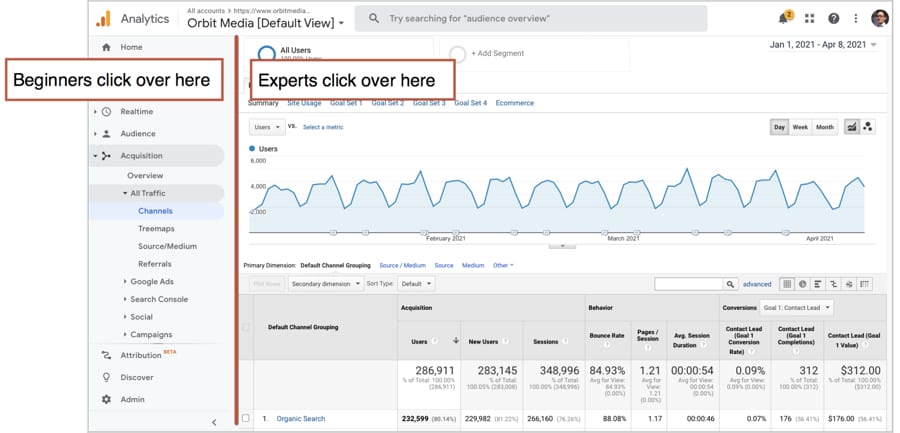Discover When Does the Google Analytics Tracking Code Send an Event Hit to Analytics and Why It Issues
Discover When Does the Google Analytics Tracking Code Send an Event Hit to Analytics and Why It Issues
Blog Article
Optimize Your Website Efficiency With Google Analytics Monitoring Code
In the electronic landscape, recognizing user interactions with your web site is crucial for optimization. This tactical application not just educates your choices yet also paves the method for a much more engaging user experience.
Understanding Google Analytics
Comprehending Google Analytics is necessary for internet site owners and marketing experts intending to maximize their online presence. This powerful tool provides vital insights right into customer behavior, enabling stakeholders to make data-driven choices. By tracking numerous metrics, such as web page sights, bounce prices, and individual demographics, Google Analytics assists determine which elements of a web site are doing well and which need enhancement.
One of the key attributes of Google Analytics is its capability to segment information. Individuals can evaluate traffic resources, individual engagement, and conversion prices across different segments, such as geographical areas or device kinds. This granularity allows marketing professionals to tailor their approaches to certain audiences, therefore improving the effectiveness of their projects.

Establishing Tracking Code
To harness the complete capacity of Google Analytics, establishing up the tracking code correctly is an essential step. The monitoring code, a snippet of JavaScript, makes it possible for Google Analytics to gather data regarding user communications on your website. To start, log in to your Google Analytics account and browse to the Admin section. Under the Residential or commercial property column, pick "Tracking Information" and then "Monitoring Code." Here, you will locate your distinct monitoring ID, which begins with "UA-" complied with by a series of numbers.
Next, you'll need to embed this code right into the HTML of your website. Ideally, put the monitoring code just before the closing tag on every web page you desire to monitor. If you're making use of a material management system (CMS) like WordPress, think about making use of plugins that help with simple assimilation.
After carrying out the code, it's crucial to verify its performance. Use the "Real-Time" records in Google Analytics to validate that information is being accumulated as anticipated. By guaranteeing appropriate arrangement, you develop a strong structure for reliable information evaluation and critical decision-making to boost your internet site's efficiency.
Trick Metrics to Display
Regularly keeping an eye on crucial metrics in Google Analytics is crucial for analyzing your internet site's efficiency and individual interaction. Among the fundamental metrics to track are page views, which provide understanding right into exactly how commonly individuals go to different pages pop over to these guys on your website. Furthermore, special visitors help you recognize the reach of your web content by suggesting exactly how many distinct customers are involving with your site over a given duration.
Bounce rate is another essential statistics, exposing the percentage of site visitors who leave your site after watching only one page. A high bounce price may signify problems with material relevance or customer experience. Conversely, session period indicates how much time site visitors remain on your website, assisting you evaluate content performance and individual interest.
Conversion prices are vital for gauging the success of your site in attaining certain goals, such Source as kind submissions or item purchases (when does the google analytics tracking code send an event hit to analytics?). Checking web traffic resources is also vital, as it helps recognize which channels drive one of the most traffic and conversions, enabling even more targeted marketing methods
Analyzing Visitor Actions

In addition, tracking individual pathways with the site aids reveal usual navigation patterns. This details is crucial in figuring out whether users can conveniently find the web content they seek or if they run into barriers that result in frustration. Recognizing high exit web pages can highlight locations that may require redesign or more appealing web content to keep site visitors.
Additionally, segmenting individuals based upon demographics, interests, and actions provides a deeper understanding of the target market. This division enables organizations to tailor material and advertising and marketing strategies a lot more effectively, enhancing the chance of conversions. Ultimately, examining site visitor actions not only notifies web site improvements but also promotes an extra user-centric strategy, leading to enhanced contentment and loyalty in time.
Executing Data-Driven Adjustments
Applying data-driven adjustments is essential for improving web site efficiency and attaining organization objectives. By leveraging insights gathered from Google Analytics, companies can determine areas for improvement and make notified decisions to optimize individual experience.
First, evaluate essential performance signs (KPIs) such as bounce rates, session duration, and conversion prices to determine details concerns influencing user involvement - when does the google analytics tracking code send an event hit to analytics?. As an example, a high bounce rate on a touchdown web page might show that the web content is not reverberating with site visitors or that the page takes too long to lots

Final Thought
In verdict, the execution of Google Analytics tracking code is essential for maximizing internet site efficiency. By properly checking customer habits and crucial metrics, useful insights can be gained, facilitating data-driven decision-making.
By tracking various metrics, such as web page sights, bounce rates, and user demographics, Google Analytics helps recognize which facets of a web site are doing well and which need improvement.
Users can assess traffic resources, user involvement, and conversion prices across different sectors, such as geographic locations or tool types. The monitoring code, a bit of JavaScript, enables Google Analytics to accumulate information about customer communications on your site.Frequently keeping track of key metrics in Google Analytics is essential for analyzing your site's efficiency and individual engagement. By leveraging Google Analytics, internet site owners can gain useful insights right into how customers communicate with their website.
Report this page